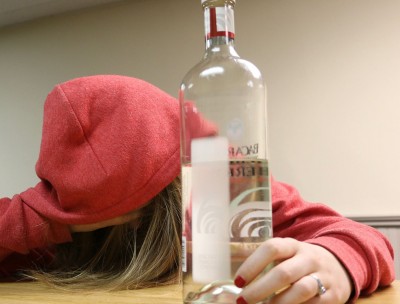Roughly 10 percent of Massachusetts’ population suffers from Substance Use Disorder, according to a report released Wednesday by the Center for Health Information and Analysis.
The National Alliance on Mental Illness defines Substance Use Disorder as “a maladaptive pattern of substance use leading to clinically significant impairment or distress,” according to its website.

People from all walks of life are affected by SUD, said Margaret Anshutz, manager of special projects at CHIA. However, there is inadequate data to determine which socioeconomic groups are most affected by SUD.
“If we are talking about claim status for health insurance, the major issue is robust, and appropriately so, privacy laws that come into play,” Anshutz said. “This is sensitive and confidential information, so there are a lot of patient protection laws. On that basic level, it’s hard to get demographic info and easy access to those datasets.”
The report demonstrates the need for attention to SUD, Andrew Jackmauh, a CHIA spokesman, wrote in an email.
“Both patients and providers face a complex system when seeking to treat substance abuse that is complicated by the lack of available services and varying levels of coverage. There is no one-size-fits-all solution to treatment of this chronic condition,” he said.
Rates of SUD are higher in Massachusetts than the rest of the nation, the report stated. High rates of addiction are compounded by the fact that many don’t seek treatment for the disorder.
“In Massachusetts, 10 [percent] of the population meets the diagnostic criteria for SUD with dependence or abuse rates for alcohol and drugs higher than the national average for all age categories, except 12-17 year olds. Most people who meet the criteria for SUD do not receive treatment,” the report stated.
Jackmauh also emphasized lack of capacity at treatment centers as a problem for patients suffering from SUD.
“Navigating this system is further complicated by misalignment of service capacity, resulting in discontinuity of care,” he said. “Some of the unmet demand for these services might be offset by increasing access to outpatient treatment services, such as medically assisted treatment for opioid addiction, or increased access to and use of other ambulatory treatments.”
Treatment options for SUD include Acute Treatment Services, Clinical Stabilization Services, Transitional Support Services and long-term residential programs, the report stated. Often, but not always, patients transition through some or all of these phases.
However, there is a mismatch between the capacity of facilities providing these treatments, and this disrupts patient flow between facilities.
“The average length of stay in ATS (one week) is shorter than in CSS (two weeks) or TSS (four weeks). The number of patients leaving ATS each week is much greater than the number of CSS or TSS beds vacated each week,” the report stated. “Two of the three most significant reasons for delayed discharge for clients who had completed detoxification were waiting for CSS or TSS programs.”
Anshutz said capacity issues put patients at a greater risk for relapse.
“This is a chronic condition, and there is a great risk for relapse. There’s a break in the continuity of care or the ability to get into care when patients feel they are at risk for relapse,” she said. “Capacity issues compound the risk for relapse.”
Capacity issues are problems the Commonwealth is trying to solve, Anshutz said.
“It’s a huge problem, so that’s one problem the Commonwealth is trying to focus on,” she said. “How do we provide continuity of care to the patients so that we can help reduce the risk for relapse?”
Several residents said substance abuse is a complex issue and disagreed about how it should be handled.
Ben Kerrigan, 21, of Allston, said prevention is an area to focus on.
“Preventing people from abusing substances in the first place has to be important to reducing rates of substance abuse,” he said.
Kathryn Heidorn, 22, of Brighton, said it is difficult to tell when someone is suffering from SUD.
“Sometimes, it’s really tough to draw the line between substance abuse and recreational use [in regards to alcohol consumption],” she said. “People may not realize they are abusing a substance.”
Kate Campbell, 24, of Brighton, said friends and family of those affected by substance use disorder have the biggest impact on recognition and recovery.
“The real responsibility falls on friends and family,” she said. “They have to form a support group and help people suffering to realize they need to seek out treatment.”






















































































































